2025 4-Pack Solar Predator Eye Repeller for Yards & Farms
$33.99
Description
When you are losing sleep over foxes, coyotes, or even deer snatching eggs or trampling your veggie patch, this 2025 4-Pack Solar Predator Eye Repeller for Yards and Farms is just what you need. Imagine waking up to all your critter worries gone and your chickens safe again. I have installed these lights around my coop and after one restless week, I finally felt peace of mind returning.
H2 Key Customer Benefits
- Enjoy worry-free nights with effective predator deterrence: These solar-powered LED lights mimic glowing predator eyes and fire-like flashes to scare off coyotes, deer, foxes and more before they reach your coop or garden
- Low-maintenance, solar-charged protection: No wiring or outlet needed; sunshine recharges internal batteries so the lights automatically activate at dusk and run all night
- Easy to set up even for non-tech folks: Install with the included zip-ties or screws, simply flip a switch and hang it at eye-level of the animals you want to deter
- Weatherproof and built to last outdoors: The units carry at least an IP44, often IP65, rating so they withstand rain and dust year-round
- Humane and silent, no chemicals or traps: Our repellers work with light stimuli rather than toxins or wires, ensuring safe deterrence without harming wildlife or pets
- Protects multiple areas with one purchase: The 4-pack gives coverage for chicken coops plus garden patch or yard entry points, ideal for shielding a full small-farm perimeter
- Backed by real-world use and honest feedback: Customers have shared wins and honest critiques, so you can use tips like placement and spacing to maximize success
Product Description
Imagine walking out to your chicken coop on a quiet night and feeling completely at ease. That is exactly the calm I found when I started using the 2025 4-Pack Solar Predator Eye Repeller for Yards and Farms. These simple-looking units pack a surprising punch at night, flashing twin red “eyes” that simulate predator presence and discourage deer, foxes, coyotes, raccoons, even skunks from getting too close. They work automatically with no wires, no chemicals, and no fuss.
Each device features twin red LED lights that flash rapidly, typically around 180 flashes per minute, creating a startling visual cue that many nocturnal animals instinctively avoid. The solar panel on top charges an internal rechargeable battery all day, so at dusk the repeller lights up on its own and runs the whole night. Models with USB backup charging or motion-activated modes stretch power even further, offering up to 60 hours of operation on a full sun charge.
What makes these devices stand out is their low-maintenance, humane design combined with surprisingly broad effectiveness. Many neighbors on platforms like BackyardChickens.com report seeing fox diggings vanish or raccoon visits dwindle after installing just a couple of flashing units. One keeper shared that the moment they mounted them by barn doors at dusk, nighttime surprises dropped off sharply: “The lights seem to work pretty well… I am giving them credit.” Another tip shared: reposition the devices every few days so predators do not grow accustomed to them.
Let me tell you about my own coop corner: I attached one on a post about 1.5 meters above ground so the “eyes” hit the height deer or coyotes expect. Within a few nights the visit count dropped. It felt like I had set up an imaginary guard. Over a couple of weeks, I added another unit near the garden edge, and suddenly I stopped spotting tracks overnight. That story of relief inspired me to help others get the same restful nights.
Product Specifications
| Specification | Detail |
|---|---|
| Device Dimensions | Around 3.9 × 2.5 × 1.5 inches (≈9.9 × 6.4 × 3.8 cm) |
| Weight per Unit | Approximately 9.6 oz (≈272 g) |
| Material | Durable ABS plastic housing, UV- and weather-resistant |
| Power Supply | Solar powered (top solar panel), typically Ni-MH AA ~1.2 V / ~1000 mAh rechargeable battery |
| Battery Life / Runtime | Fully charged, can last up to ~14 nights without additional charging in some models |
| Waterproof Rating | IP65 (fully dust-tight and water-resistant to rain/spray); other listings mention IP44 for lighter rain protection |
| LED Output | Dual red strobe “predator eye” LED lights flashing at ~180 flashes per minute for maximum deterrence |
| Coverage Angle | Approx. 60 degree viewing angle per device, with visible range reaching hundreds of feet |
| Mounting Height | Recommended at animal eye level (about 1–2 m / 3–7 ft above ground) for optimal effect |
| Operational Mode | Auto ON at dusk / OFF at dawn; some models may offer USB charging or motion activation |
| Certifications / Safety | Strobe lights may trigger seizures in photosensitive individuals (warning labels on most brands) |
How to Use/Application Guide
Get It Out of the Box and Running in Minutes
First, locate the ON/OFF switch on the back of each unit and power it on. Aim for full-charge sunshine, about five hours in direct light, to ensure the internal rechargeable cells (usually Ni-MH AA) are ready. Once charged, the lights automatically switch on at dusk and off at dawn, requiring no further action. Some models offer USB charging or motion activation to save power, but the ones I have used blink reliably all night when charged properly.
Mounting Height and Placement Matter
Mount each device at roughly 20–30 inches (about 50–75 cm) off the ground; eye level for most deer, coyotes, and raccoons. Positioning at predator eye height maximizes the psychological impact of the flashing “eyes.” Ensure the solar panel faces the brightest daylight direction and avoid heavy shade. A sun-facing wall or post works well.
Spacing for Perimeter Coverage
For full protection, space the lights 100–200 feet apart, forming a defensive ring around the coop or garden. This layout creates overlapping fields of view, blocking multiple approach angles. On larger property, use a cluster setup of two or three units to reinforce weak spots or open corners.
Placement Rotation Keeps Predators Guessing
Online forums, especially among poultry keepers, suggest rotating units every few days to prevent predators from acclimating. As one user advised:
“The lights seem to work pretty well… I am giving them credit,”
and later noted that repositioning was key to avoiding habituation. Other keepers agree, once predators realize the lights are not a real threat, their deterrent effect fades.
Combine With Other Strategies for Best Results
Solar repellers do not replace physical security. Experts emphasize predator-proof fencing, secure coop construction, and nightly door locking as foundational protections. Lights act as a visual deterrent, but combining them with hardware cloth fencing, buried wire perimeters, and ideally a protective rooster or guard animal offers stronger protection.
Monitor and Adjust Based on Predators in the Area
With trail cameras or simple nighttime checks, observe what happens after setup. Does raccoon digging stop? Are coyote tracks disappearing? Adjust placement if certain areas see more activity. One user who deterred coyotes by clustering lights near sensitive points described the method as “absolutely working” with zero losses reported over several seasons.
| Step | What to Do |
|---|---|
| 1 | Charge each device in full sun for about 5 hours. |
| 2 | Flip the ON switch on the back. |
| 3 | Mount at eye level (20–30 inches above ground). |
| 4 | Face solar panel toward the brightest daylight direction. |
| 5 | Space units 100–200 ft apart around coop or yard. |
| 6 | Rotate devices every few days to prevent predator adaptation. |
| 7 | Combine with secure fencing, buried wire, and an automatic coop door. |
| 8 | Use trail cameras or inspect tracks to monitor predator response. |
By paying attention to height, spacing, orientation, and rotation; while also using solid coop locks, hardware cloth, and other predator controls, you are creating a layered defense that is both humane and effective. It is not just about installing a light; it is about building lasting peace of mind.
FAQs
1. Do these solar predator lights really work on deer, coyotes, and raccoons?
Often yes at first, then results taper if nothing else changes. University extensions put lights and other “frightening” devices in the short-term toolbox. Deer, for example, can be spooked by strobe lights, radios, or sprinklers, but they learn fast, so results are usually temporary unless you mix methods or rotate where and how you use the stimulus.
Coyotes are clever, and color matters. Wildlife damage specialists note coyotes are less alarmed by colored lights like red or blue than by bright white light, which means placement and a layered approach are important if coyotes are your main concern.
If you like hearing from keepers in the trenches, poultry forums report plenty of “worked for a while” experiences along with tips to move lights and combine them with hard barriers. That real-world pattern matches what the universities say about habituation.
2. Where should I put the lights, and how many do I need?
Treat placement like fencing. Think perimeter, not just one spot. Manufacturer installation guides for predator-eye lights recommend mounting at the animal’s eye level and ringing the vulnerable area so an approaching animal sees a flash from any direction. For large ground predators like coyotes, they suggest roughly 100 to 200 feet between lights. For smaller ground predators, spacing can be tighter. For deer, a “cluster” of four lights on one post with heads facing north, south, east, and west is commonly recommended, with periodic moves to keep deer guessing.
3. How do I keep animals from getting used to the flashing?
Rotate and vary. Extensions explain that wildlife habituates to repeated stimuli. Move your lights on a schedule, change heights, and shift the ring outward or inward a few yards. One manufacturer specifically advises moving deer clusters every one to two weeks. Pair the lights with another cue, such as a motion sprinkler or a door that locks reliably at dusk, to extend the deterrent effect.
4. Do raccoons or owls ignore these lights?
Raccoons are notorious problem-solvers. Fright-based methods like steady lights, radios, or pie tins often fade after a short time. Motion-based surprises work better because they are unpredictable, so consider adding a motion flood or sprinkler where raccoon traffic is heavy.
Owls hunt primarily by sound. They can locate prey in near total darkness using finely tuned hearing, so a visual cue alone will not reliably deter them. If aerial predators are your concern, cover the run and close gaps in the coop as a priority.
5. Are the lights safe for people, pets, and wildlife?
These devices are humane because they rely on light, not traps or toxins. Do keep neighbors and family in mind. A small percentage of people with epilepsy are sensitive to flashing lights, and medical groups note that flashes in the range of roughly 5 to 30 per second are the most likely to trigger problems. Point the units away from windows and paths, and avoid installing them where a person who is photosensitive could be exposed for long periods.
6. What else should I do besides lights to truly protect a coop or garden?
Think layers. Extensions consistently recommend strong hardware cloth, small openings, and a buried or skirted barrier to stop diggers. Aim for mesh openings under one inch on walls and vents, bury hardware cloth 12 inches or more or lay an outward “apron,” and keep grass and brush trimmed so predators cannot hide near the run. Lock doors nightly with raccoon-resistant latches. These basics make any light-based deterrent far more effective.
7. How quickly should I expect results, and how will I know it is working?
Usually you notice a change within a few nights. The clearest signs are fewer tracks, no fresh digging near the fence line, and a calm flock at sunrise. If activity continues on one edge of the property, tighten your spacing there or add a motion-based device for variety. Keep notes, adjust weekly, and combine the lights with the physical defenses above for steady gains. This approach mirrors the “integrated” strategy wildlife experts recommend for stubborn visitors.
Conclusion
You now have the full picture: a thoughtfully designed, humane, and low-maintenance predator deterrent that blends practical protectiveness with peace of mind. The 2025 4-Pack Solar Nocturnal Animal Repeller Predator Control Lights can bring real change; fewer critter visits, fewer losses, and more restful nights.
This guide has walked you through how these LED strobe “eyes” work, shared real user feedback from backyard farmers and poultry keepers, and shown you how to position, rotate, and monitor for the best results. While they work well on their own, combining the repellers with solid fencing, secure coop doors, and even trail cameras or guard animals creates the layered defense that seasoned keepers recommend.
Every night of calm is worth the minimal effort to set these lights up. You can begin with a couple of units, track predator response, and rotate positions as needed. If you are ready to give your coop, garden, and yard that gentle guardian glow, the 4-pack offers the flexibility to protect multiple corners, from the coop door to the vegetable patch, with humane, solar-powered simplicity.
Related products
-
Sale!
Solar Predator Eyes 2 Pack, Motion Activated Animal Deterrent for Coops and Yards
$19.97Original price was: $19.97.$17.97Current price is: $17.97. Buy Now -
Nature’s MACE 6 lb Pet-Safe Dog Repellent Granules
$38.97 Buy Now -
Sale!
Mint-X 13-Gallon Rodent-Repellent Kitchen Trash Bags, Mint-Flex, 120-Count
$33.99Original price was: $33.99.$28.41Current price is: $28.41. Buy Now -
4-Pack Solar Nocturnal Animal Repeller for Coops and Gardens
$37.97 Buy Now


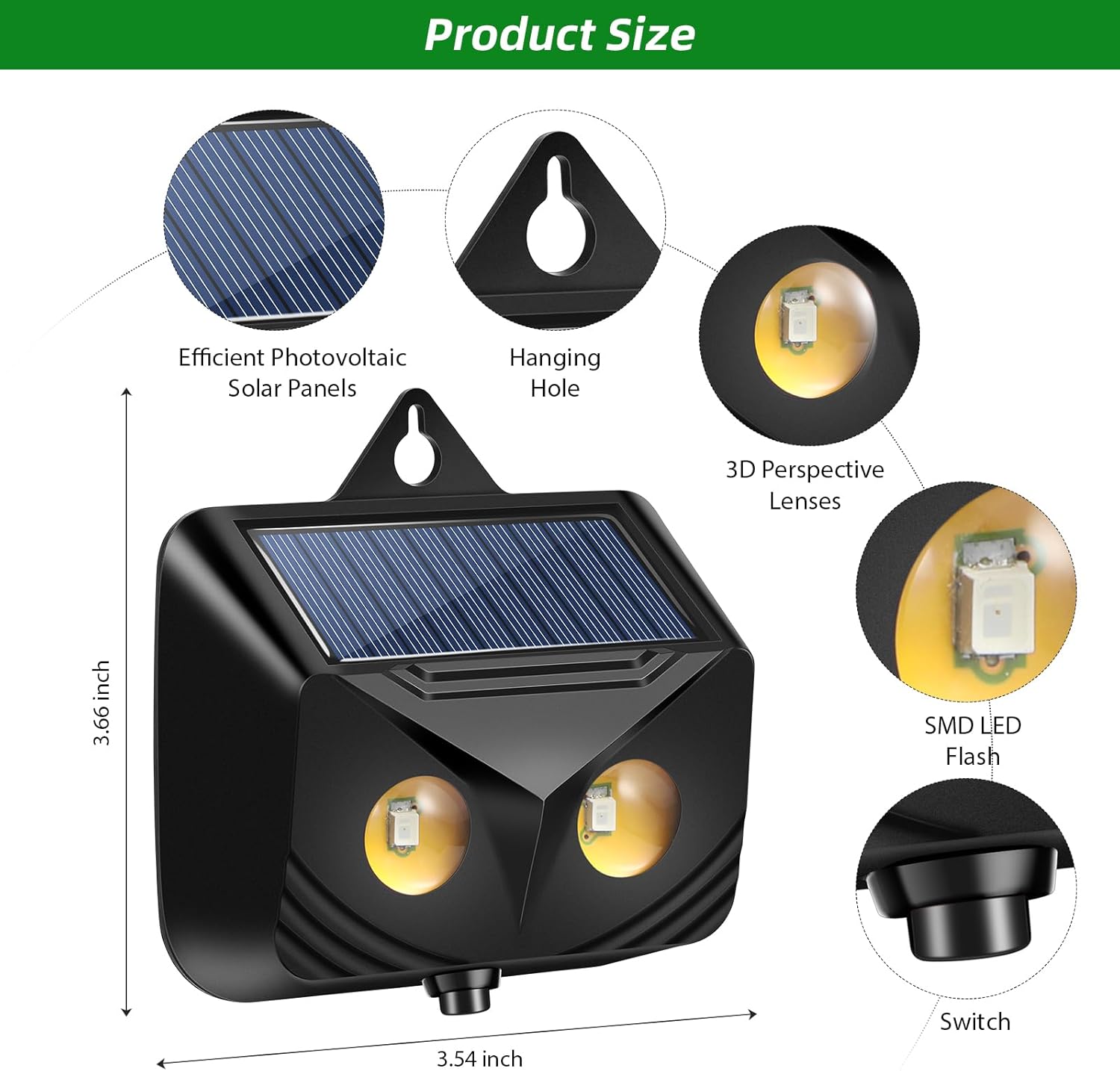
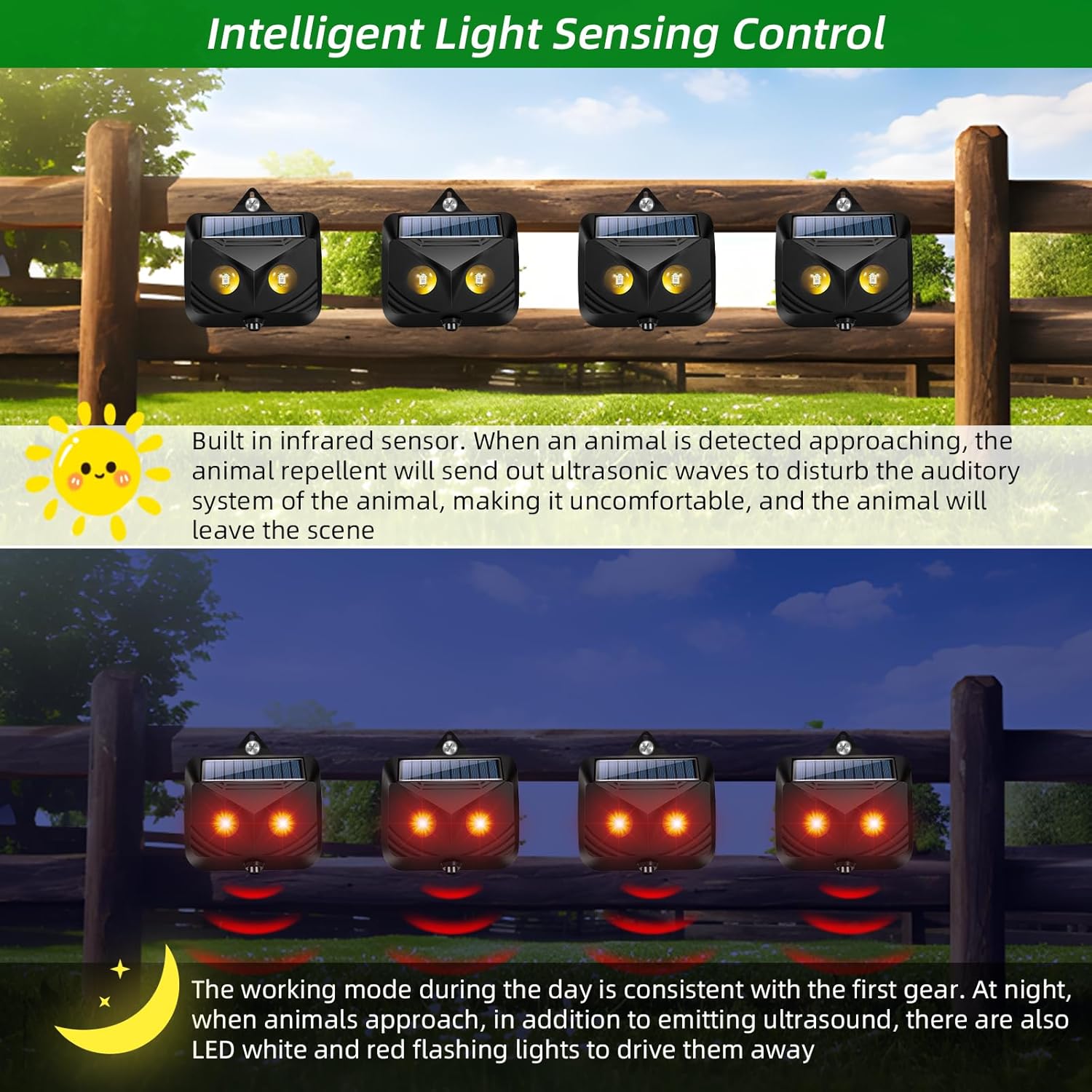
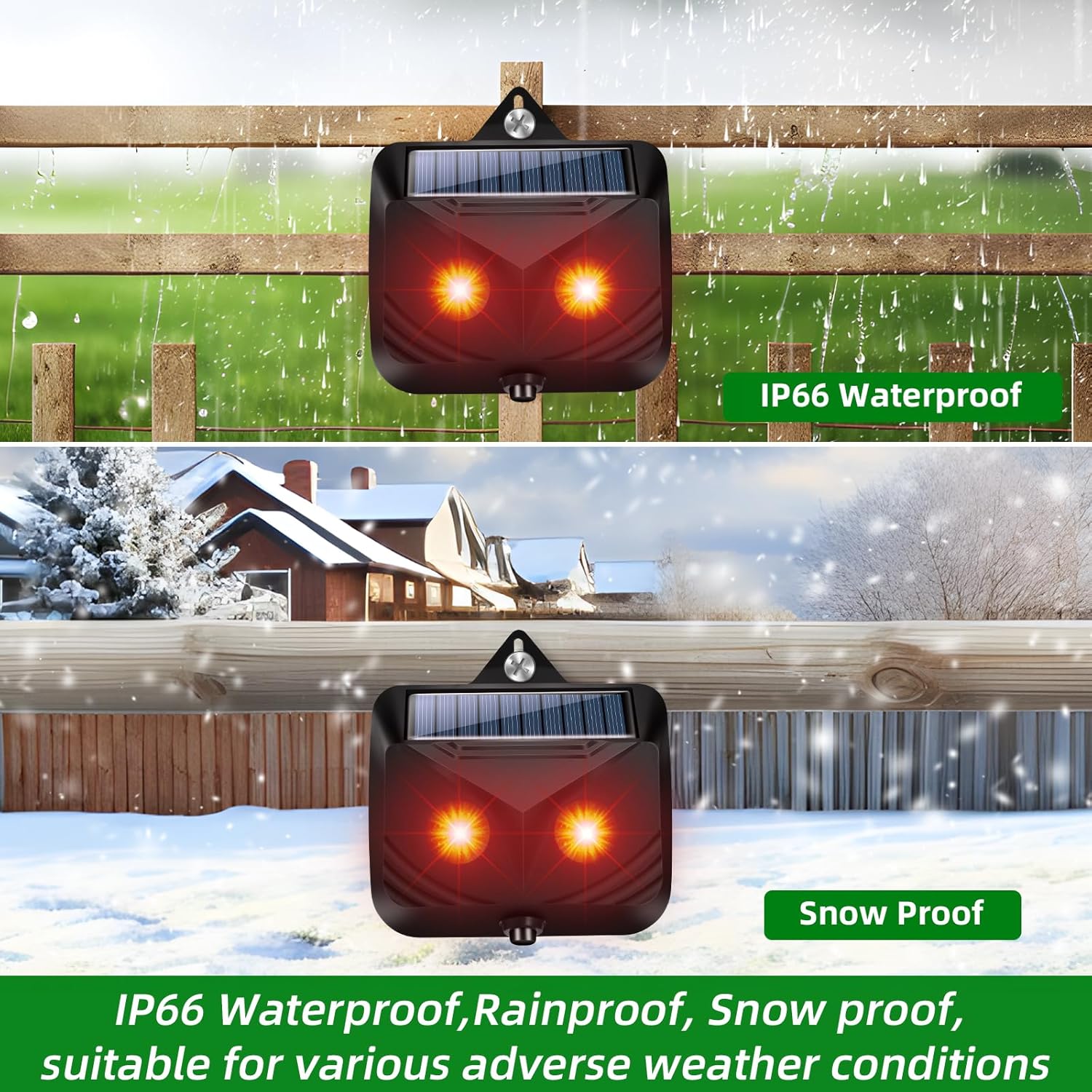
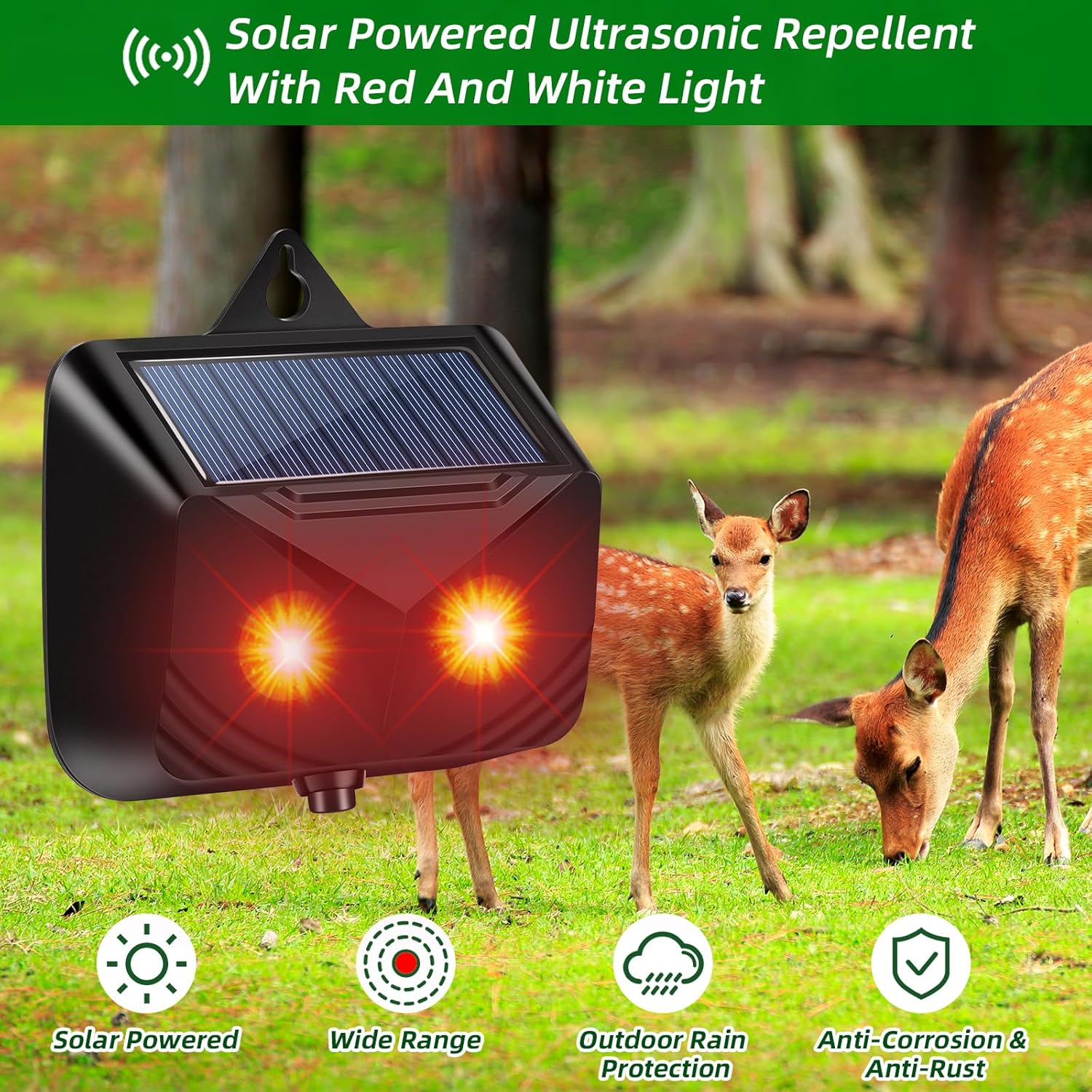
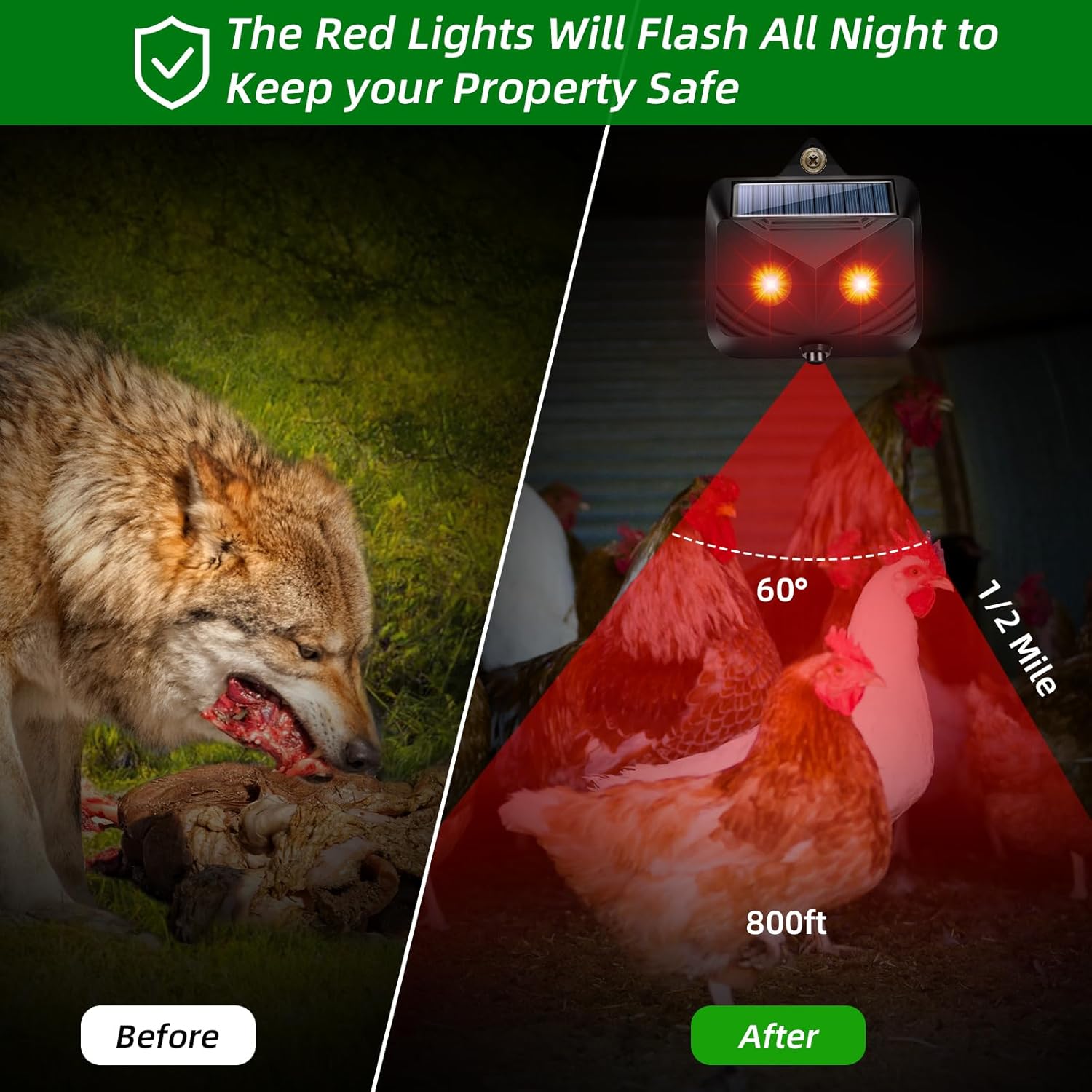
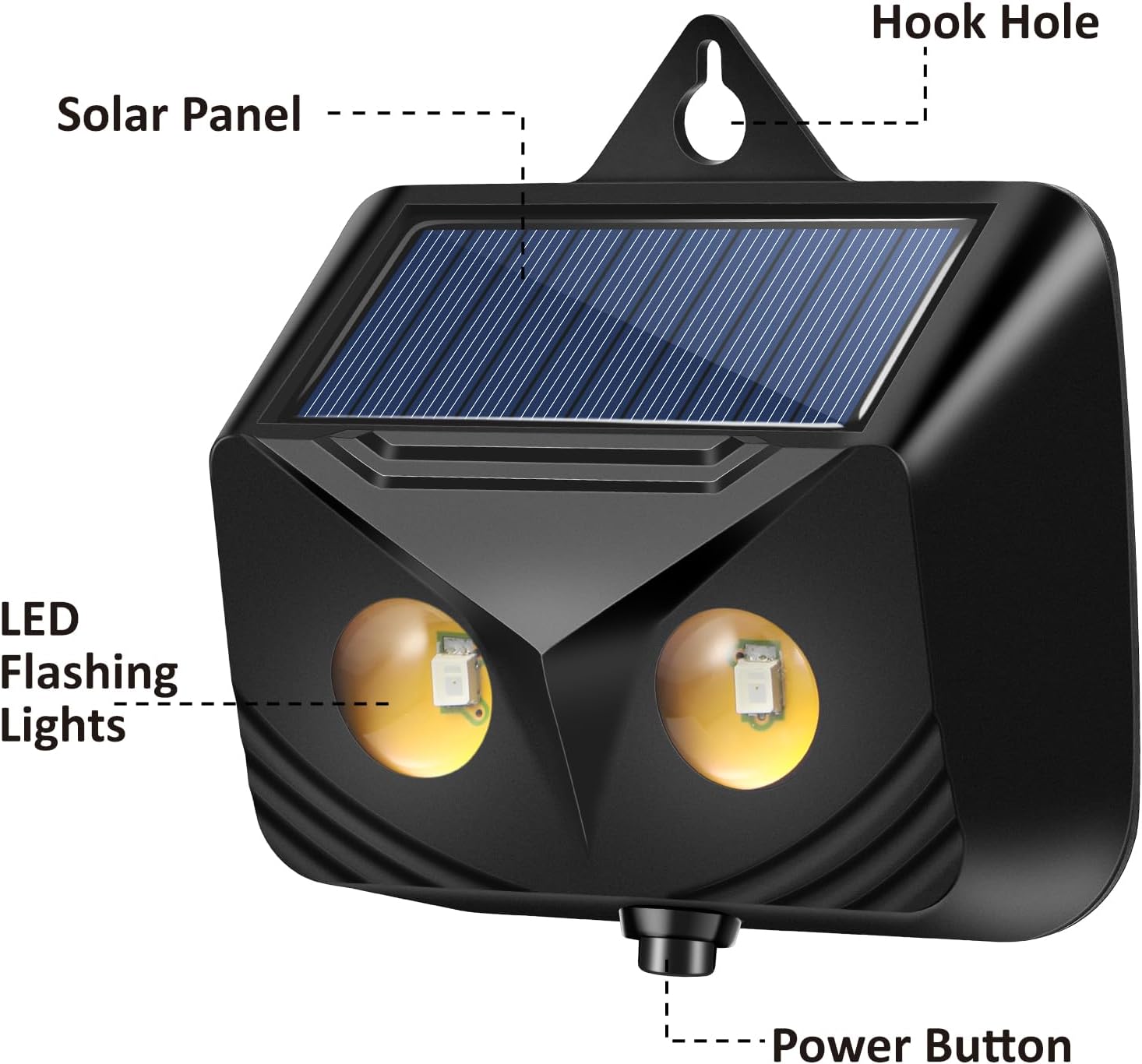
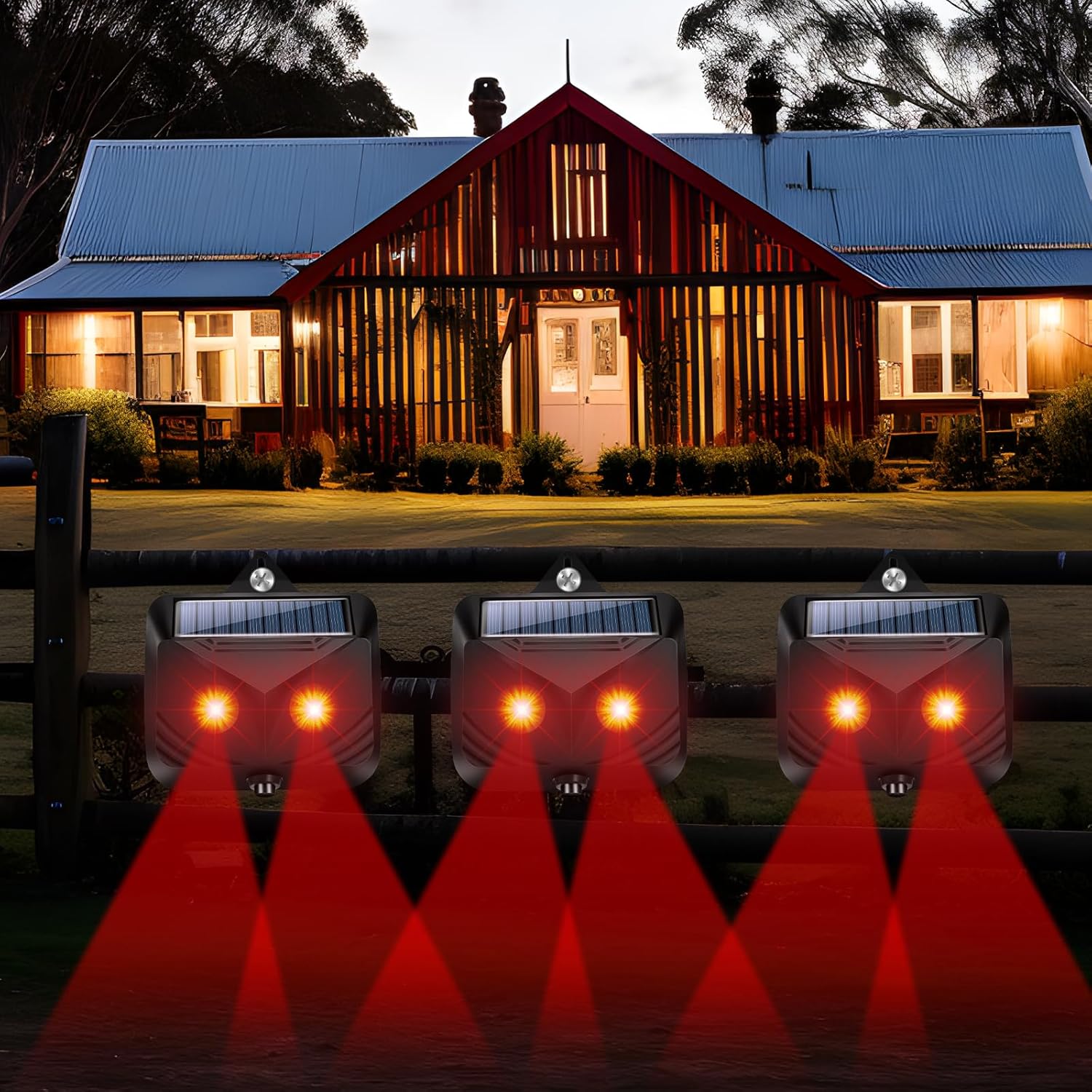
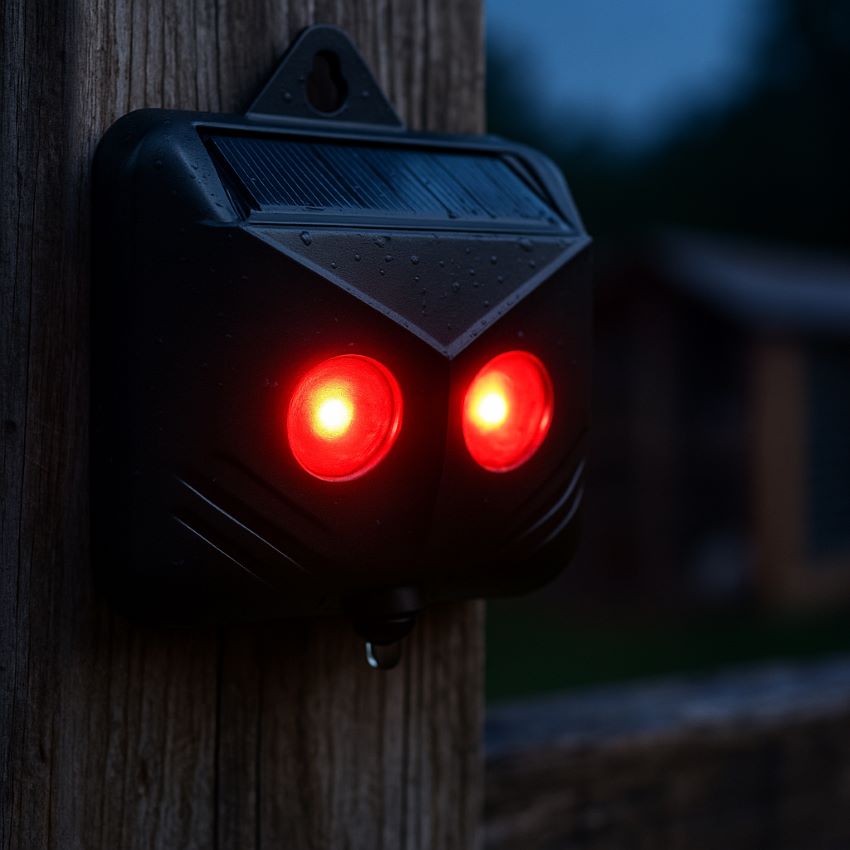
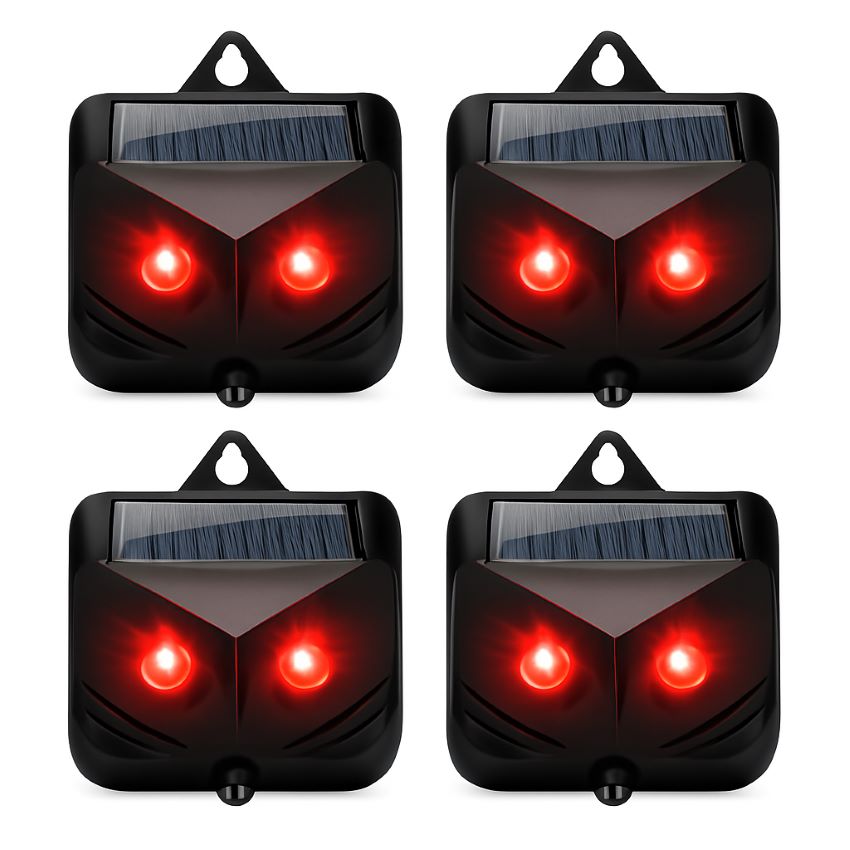
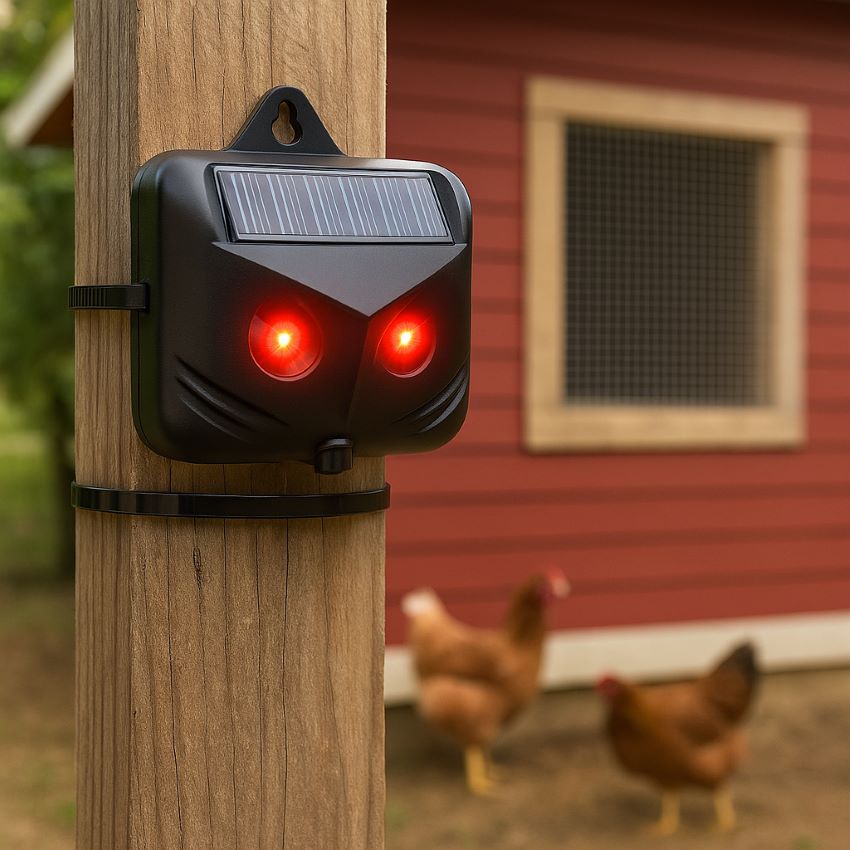
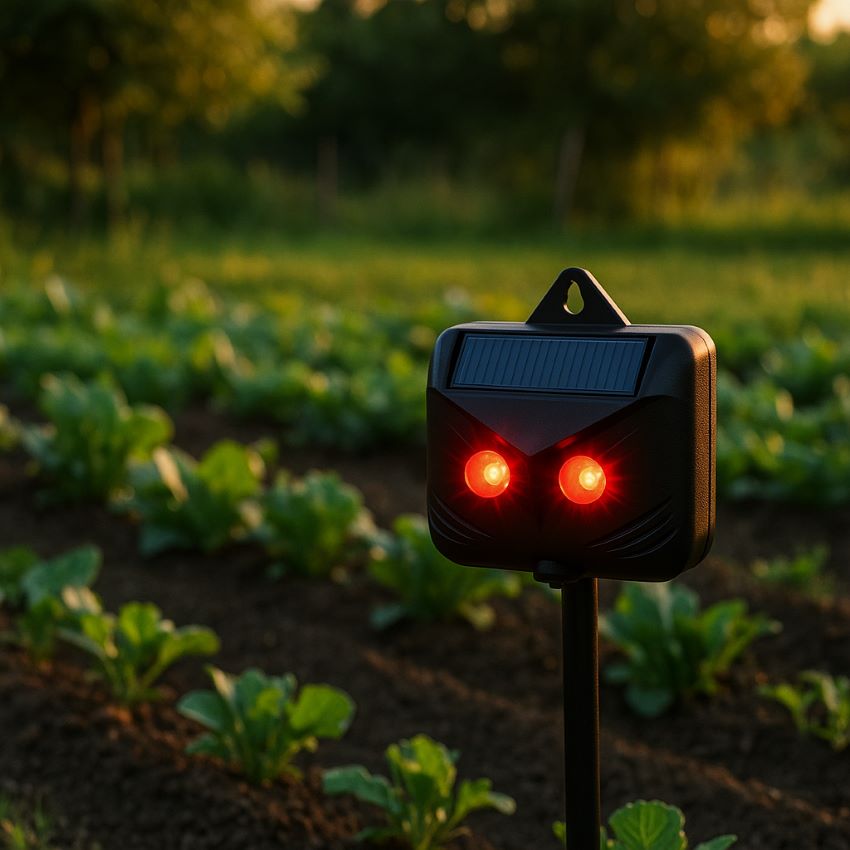

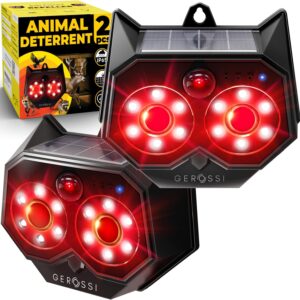


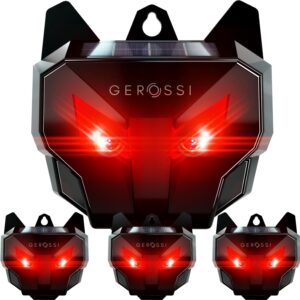
Reviews
There are no reviews yet.